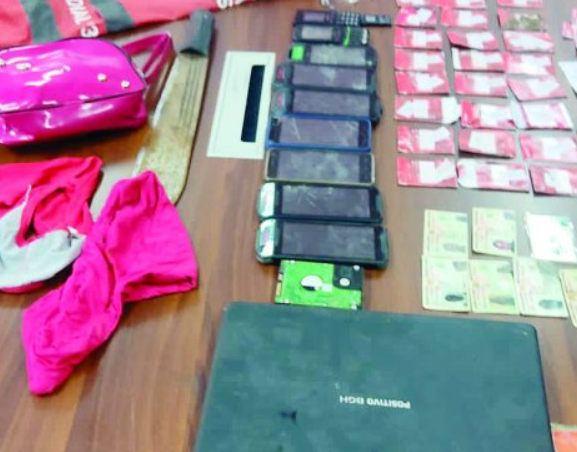Homicide detectives revisited the house of Collins Jumaisi Khalusha, the suspect linked to multiple killings in Kware, Nairobi, and collected additional evidence.
Directorate of Criminal Investigations (DCI) officers seized a bloodstained hammer, a pair of pliers, two kitchen knives, four pairs of women’s shoes, and a gunny bag.
Imelda Judith Karenya’s mother, who is alleged to have been Khalusha’s wife and first victim, confirmed that one of the nine identification cards recovered at the suspect’s house belonged to her daughter. The house has been declared the primary crime scene following these discoveries, and Khalusha’s admission that bloodstains found on the walls and floor were from some of his victims.
Khalusha, who had previously disowned his confession at the Makadara Law Courts, admitted yesterday that he murdered 20 women last year and 10 this year. Detectives, accompanied by the suspect, spent about five hours in the house and seized a dressing mirror with fingerprints, a mattress, a bloodstained pillow, sisal and manila ropes, and a red T-shirt. Another crucial piece of evidence was a book with hospital receipts bearing the name of an unidentified woman.
“A team was sent to the hospital to confirm if the woman was attended to there,” a senior detective said.
Khalusha is the prime suspect in the macabre murders of at least 42 women in the city, claiming he met all of them on the streets. He stated that some of his victims were selling airtime in the area, and he targeted them before luring them to his house, where he raped and later killed them.
In his confession recorded at the DCI offices, Khalusha claimed he had killed 10 women this year alone. The last victim was killed on July 11, a day before bodies were discovered at the Kware dumpsite in Mukuru, Nairobi. Khalusha told detectives he strangled the women, left their bodies on nylon paper in his house before dismembering them, and later dumped them at the disused quarry about 500 meters from his house. He claimed he sometimes used the seized hammer and that most of his victims were women from the slum where he also lived.



